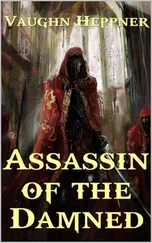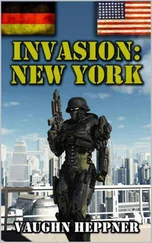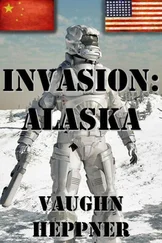At the same time, the Fourth Front reached the Mississippi River, linking with the SAF amphibious force in New Orleans. In the following weeks, Marshal Wen made rapid progress north, soon reaching Little Rock, Arkansas.
His primary problem was the South America Federation troops. Their task was to mop up the American forces in the center of the corridor. The Brazilian and Venezuelan soldiers proved unequal to the challenge as well-trained American formations often repelled their attacks.
To bolster his allies and seeking a vast haul in prisoners, Chairman Hong detached the main tank armies of Third and Fourth Fronts. Despite the vigorous protests of his field commanders, Chinese armor swung corridor-ward to support Field Marshal Sanchez’s First Front as it approached Oklahoma City.
The immediate results of this unexpected change proved favorable. In a grand pincer move, the combined PAA-SAF troops trapped three American armies on the southern side of the Canadian River. A period of confused fighting followed as General McGraw made his second historic breakout, managing to extricate the mobile formations. In the early days of September, however, 225,000 American troops surrendered in what became known as the Oklahoma Pocket.
2039, September 7-24. Reorganization. Sorting out the attacking formations and returning them to their parent Fronts took time. Tanks and other vehicles showed the strain of the terrific pace and long marches. This was a period of rest and reinforcement, including several mopping up operations.
It had become clear to both American and Chinese commanders the inferior quality of the SAF troops, and both made plans accordingly.
Newly formed U.S. Militia units finally began to arrive in number along the eastern side of the Mississippi River. This freed many of the regular Army troops there. The American command was divided about where to put these “added” forces. President Sims and the Joint Chiefs agreed to keep them east of the Mississippi River as a mobile “fire brigade” in case the Chinese crossed the great American river in force. General McGraw—a hero to many, though to others an unstable self-aggrandizer—argued otherwise. He urged the Joint Chiefs to take bold risks in order to defeat the enemy and hurl him back into Mexico.
2039, September 24-October 28. Grinding Battle. Marshal Liang began the so-called Drive on Colorado. Unseasonable flood-level rains and ferocious American resistance slowed the advance to a crawl as the soil became muddy and slimy, with vast shallow lakes dotting the landscape. In the second week of an amazingly warm October for the Colorado Front Range, the offensive stalled completely even as the Chinese neared Greater Denver. The continuous fighting—for some, having lasted an incredible nineteen weeks—had exhausted both sides.
Heavier rains struck the Great Plains, turning the war there for both sides into a struggle against General Mud. Mainly due to brilliant Chinese hovertank exploitations, Wichita fell on October 6, while the last American soldier left Kansas City by October 26. Marshal Wen’s Fourth Front began a slow and careful approach on St. Louis.
COMMENT. At this point in the conflict the main American Army desperately needed help. The original soldiers had taken massive causalities and received little rest during endless months of fighting retreats. There was a flood of quickly-trained reinforcements. Many of these troops had perished in the cauldron or encirclement battles. This stall in the Aggressor offensive gave America a breathing spell, but how long would it last and could they use it to shake down their new reserves? For America, the time of crisis had arrived.
The Chinese scented victory, but nascent guerilla and partisan activity in the Occupied Territories had already begun to tell on the supply situation. Worse in the Chinese view, the President of the United States had in desperation unleashed his ruthless Director of Homeland Security, who continued to raise ever greater numbers of Militia formations to throw into the furnace of battle.
The war hung in the balance, with the world awaiting its outcome .
ARKANSAS RIVER, KANSAS
It was cold, wet and miserable under the supposedly rainproof camouflage slicker. Clouds hid the stars, making the night pitch black except for the dim lights near the Chinese pontoon bridge a mile and a half away.
Master Sergeant Paul Kavanagh lay on his belly. Freezing raindrops pelted his head and occasionally found a way behind his ears. He shivered every time that happened. The bad weather was making it difficult to see anything with his night vision binoculars.
“We should pull back,” Romo said.
Paul grunted for an answer. He was too angry for words.
The world seemed a sea of icy, slushy mud and snow, while nearby the swollen river raged. It was late October and much colder than it had a right to be. Glaciation—approaching Ice Age weather—had changed the normal patterns. Paul didn’t really care why it was so cold. Apparently too many volcanos had spewed particles into the air, and had been for some time now. His wife had told him before that TV preachers talked about the End Times and approaching Armageddon, and how there would be more earthquakes and calamities. Maybe they were right. The invasion this summer in Texas had felt like Armageddon. Weather-wise, the number of solar flares was almost zero—had been for years—and that supposedly made the Earth colder even without the mass volcanism. Talk about your calamities.
“The hell with it,” Paul muttered.
“We’re leaving?” Romo asked.
Paul gripped the binoculars so his knuckles turned white. The Chinese were crazy to have built a pontoon bridge down there. The rain-swollen river should have swept it away, but it hadn’t. Nothing worked right anymore.
Romo and he were an LRSU team: Long Range Surveillance Unit. They belonged to SOCOM, which ran American commandos: SEALs, Delta Force, Marine Recon, you name it.
Normally, a LRSU team was composed of four men. Normally—ha, that was a joke. Since June 15, nothing had been normal. The American military had taken enormous casualties as the combined Pan-Asian Alliance and South American Federation forces drove up through the Great Plains like a bayonet shoved into the United States’ belly.
“Now’s a perfect time to slip away,” Romo suggested.
Paul lay on his stomach. He was cold and he was tired. Since this spring, he’d fought in California, in Mexico, Texas, Oklahoma and now here in Kansas near the Colorado border. His wife and kid were safe for the moment in Reno, Nevada. Yet how safe would anyone be if the Chinese bastards split the U.S. in two? The enemy’s goal had become obvious and nothing America had done so far could stop their relentless advance.
There were just too many of them. Worse, the enemy never seemed to run out of supplies or the will to keep driving north.
This part of the world had turned to water and mud, a slimy glop that clutched boots and wheels alike, striving to pull them off the wearer. Maybe if the enemy didn’t have so many hovercraft things would be different, but Paul wasn’t so sure anymore.
“Do you have an idea?” Romo asked.
Paul tore his eyes from the field glasses and glanced at his blood brother. Romo lay beside him under his own camouflage slicker. The Mexican Apache used to be a hit man for Colonel Valdez of the Mexico Home Army. He was shorter than Paul, and he was dark-skinned, with sharp features, a shaved scalp and the eyes of a stone-cold killer. He also had an earring with a feather dangling from it. Go figure.
“Yeah,” Paul said. “I got an idea.”
Читать дальше












